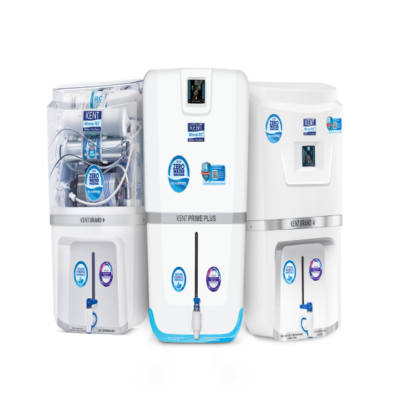
India is facing severe water crisis today as most of its cities are facing shortage of pure and clean drinking water. Continuous corporate privatization, irresponsible public attitude, lack of government planning and improper disposal of human and industrial waste have led to water scarcity in our country. According to the government, it is working hard towards providing clean, piped water to all homes. However, there is a question mark on its quality.
As a result, many urban households have started using water purifiers so that they can consume pure and healthy water. Water purifiers are a new trend in the county and use a variety of technologies such as Reverse Osmosis (RO), Ultra Filtration (UF), Ultraviolet Filtration (UV), etc. So many options are useful but confusing as buyers need to choose the best fit for their homes.
Buyers must first determine whether they need an RO water purifier or not as the TDS level of the water may be within acceptable limits in their homes. Only a little filtration may be required to obtain clean water. The following factors can help buyers choose the best water filter for their homes:-
Presence of Bacteria, TDS and Health Hazards in Water
The World Health Organization (WHO) has set specific guidelines for determining the quality of drinking water. According to WHO findings, TDS in water consists of magnesium, sodium, calcium, chloride, potassium, sulfates, bicarbonate and organic matter. Both sewage and natural sources are responsible for generating TDS. In view of all this, the drinking water standard in India has been fixed at 500 MG/L, which can be increased to 2000 MG/L if no other source of drinking water is available.
Water tankers and borewells are found in abundance in India where TDS levels are high. This, in turn, causes health risks due to the presence of bleach, chlorine, viruses, bacteria, cysts, microplastics, antibiotic residues, pharmaceutical compounds, protozoa, etc. Chemicals such as nitrates, arsenic, iron and lead are also found in drinking. Water at certain places in India, on the basis of their geographical and demographic properties. However, the general consensus among water experts is to completely remove TDS from water using purifiers.
Many of them are of the view that RO water purifiers should compulsorily be installed in all those homes where TDS, heavy metals and other contaminants are present in high amounts in the water. Nevertheless, first of all, it should be ensured that the water in the house needs to be purified. Otherwise, it will lead to ruin.
Buyers Can Check the Level of TDS and Other Contaminants at Home
Buyers can easily find out the level of TDS in their water, that too at home. Basic kits for TDS testing, such as chlorine and lead, are easily found on the Internet. It would also be useful to purchase a TDS meter so that the overall quality of the water can be checked. Since new-age impurities are the main concern here, an RO water purifier is essential to remove them.
Before buying a water purifier, it is necessary to check the TDS range and the specifications assigned to it as this will determine the suitability of the purifier. Many popular water purifier brands have listed TDS levels and compatible purifiers on their websites to make it easier for buyers to pick one for themselves.
For example, municipal water does not require an RO water purifier at all. On the other hand, mixed water sources like borewells require an RO purifier that has all three major inbuilt technologies, i.e. UF, RO and UV. Brackish water in the range of 1-200 MG/L will require a water purifier with UF+UV technology.
Choosing a Water Waste RO Purifier
Today, RO water purifiers are required in many homes as their water is salty, smelly and has TDS content. This also leads to wastage of water as a lot of water gets rejected after purification. Therefore, we should choose an RO water purifier that provides options for storing and using that rejected water. Choose an RO that offers two tanks, one for rejected water and one for purified water.
The rejected water can be used for cleaning floors and cleaning utensils. In this way there is wastage of water and adequate use of both the types of water. Buyers should also look for green RO purifiers as they are known to reduce water wastage. They work at their best when the TDS level in water is in the range of 200-500 ppm.
Water Storage in RO Purifier
The water storage tanks in RO purifiers are available in two options – plastic and stainless steel. The latter is slightly costlier than the former, so buyers should choose the purifier accordingly. Both the materials have the same function, that is, to store pure water.
Electrical & Non-Electrical RO Purifiers
There are both electrical and non-electrical RO water purifiers available in the market. non-electrical RO water purifiers
Work similar to electrician, i.e. remove impurities from water. They also use similar technologies as UF and newer techniques include carbon and sediment filtration.
Also, where there is no electricity, the electric RO will be useless. So, it all depends on the requirement of the buyers to buy a good RO water purifier.